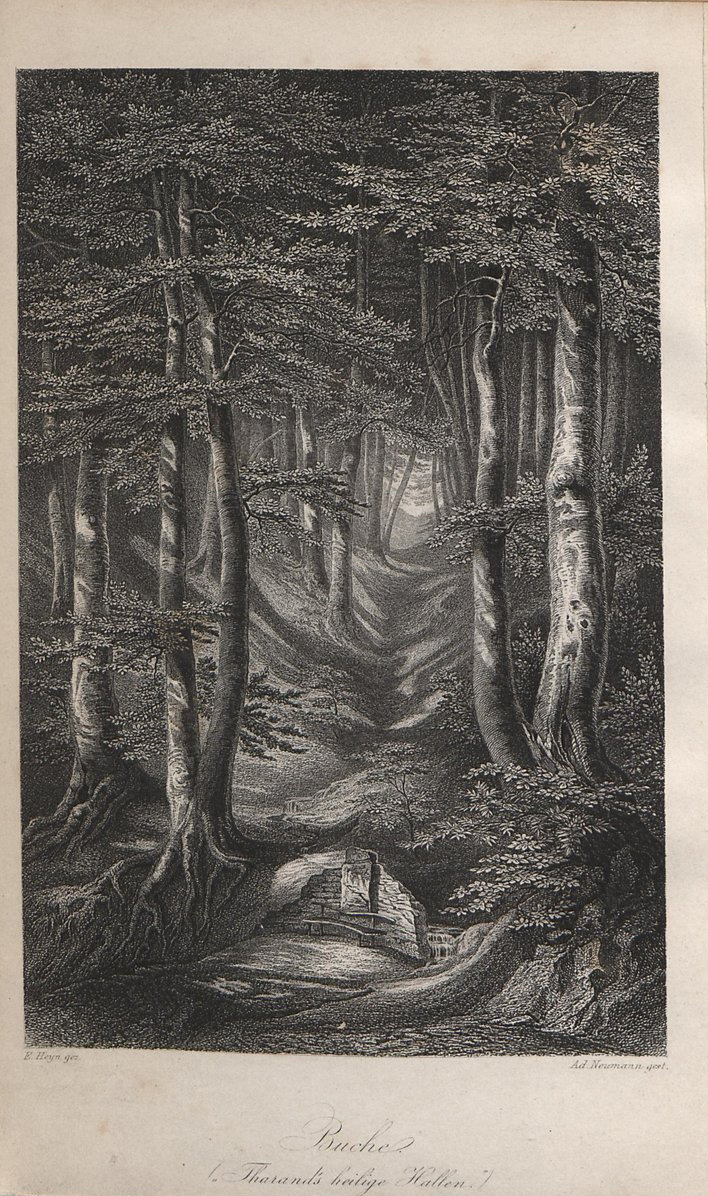Source

Source: “Buche” [Beech Tree]. From Emil Adolf Roßmäßler, Der Wald. Leipzig etc., 1863, frontispiece. Original drawing by Ernst Heyn, etching by Ad. Neumann. Available online at: http://www.deutschestextarchiv.de/rossmaessler_wald_1863.
This etching appeared as the frontispiece of Emil Adolf Roßmäßler’s study The Forest, published in 1863. It was based on a drawing by Leipzig artist Ernst Heyn. The title, “Beech Tree. Tharandt’s Hallowed Halls,” refers to a landscape park in the Saxon town of Tharandt that was created in the 18th and 19th centuries and visualized Enlightenment ideas of a natural landscape “enhanced” by careful human intervention. The “Hallowed Halls” of this park were made up of several promenades, viewpoints, shelters, and memorial stones. The image shows one of the beech-lined paths that leads down to a bench in front of what might be part of a ruin and a memorial stone. Many landscape parks of this period were influenced by the ideals of Romanticism and often featured artificial ruins. Tharandt, however, actually featured a genuine medieval castle ruin.

Source: “Buche” [Beech Tree]. From Emil Adolf Roßmäßler, Der Wald. Leipzig etc., 1863, frontispiece. Original drawing by Ernst Heyn, etching by Ad. Neumann. Available online at: http://www.deutschestextarchiv.de/rossmaessler_wald_1863.